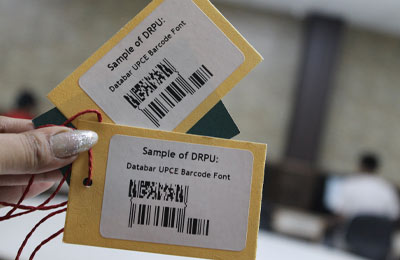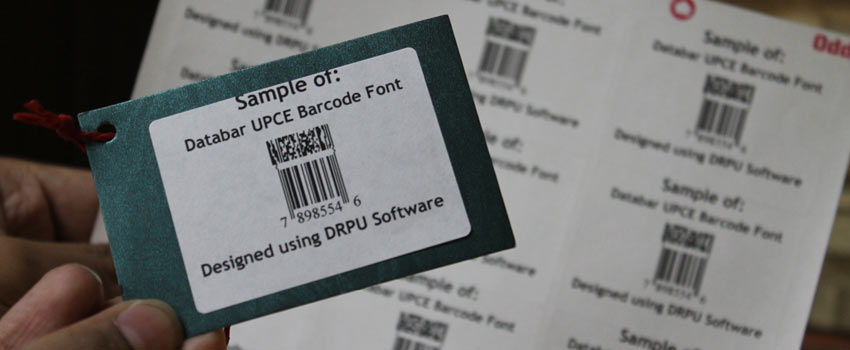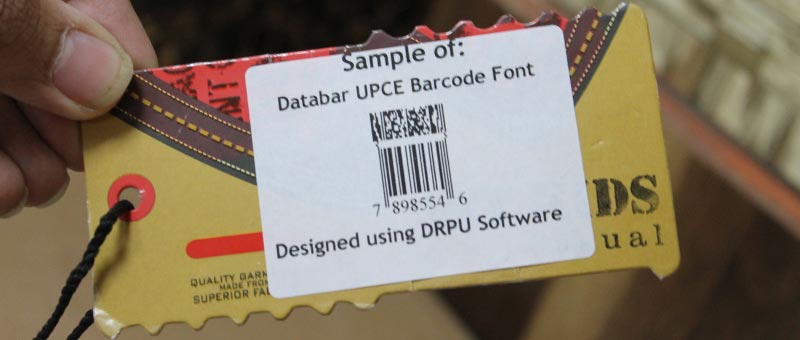Introduction of Databar UPCE Barcode
| Published Date: 01/06/2023
Difference of Databar UPCE Barcode from Other Types of Barcodes
A Databar UPCE barcode is a type of two-dimensional barcode that is used primarily in the retail industry to encode product information such as product code, weight, and price. Compared to other types of barcodes, such as the traditional UPC barcode or the more advanced QR code, the Databar UPCE barcode has several key differences in terms of its structure, data capacity, and application.
The structure of a Databar UPCE barcode is different from that of traditional UPC barcodes. While traditional UPC barcodes are 12-digit barcodes, Databar UPCE barcodes are 14-digit barcodes. The additional two digits in the Databar UPCE barcode encode information about the weight and price of the product, in addition to the product code and check digit that are encoded in the traditional UPC barcode.
Databar UPCE barcodes also have a smaller footprint than traditional UPC barcodes, making them more suitable for use on small products. This is because Databar UPCE barcodes use a more efficient coding system to encode the same amount of information in a smaller space. This can be particularly useful for products that have limited packaging space or that require a barcode to be printed directly onto the product itself.
Compared to other types of barcodes, such as QR codes or Data Matrix codes, Databar UPCE barcodes have a more limited data capacity. This is because Databar UPCE barcodes are designed to encode only basic product information such as product code, weight, and price. They are not designed to encode more complex information such as URLs, contact information, or multimedia content, which can be encoded in other types of barcodes.
However, this limited data capacity can also be an advantage in certain applications. For example, retailers may prefer to use Databar UPCE barcodes because they encode only the essential product information needed for inventory and pricing management, without the need for additional software or scanning equipment.
Databar UPCE barcodes are primarily used in the retail industry for inventory and pricing management. They are typically printed on product packaging or labels and scanned by retailers to track inventory levels, monitor sales, and adjust pricing. Because Databar UPCE barcodes encode information about the weight and price of the product, they can also be used to calculate the cost of the product based on its weight and the price per pound or ounce.
In contrast, other types of barcodes such as QR codes or Data Matrix codes are often used in marketing and advertising applications. These barcodes can be scanned by mobile devices to access additional product information or multimedia content such as videos or images. QR codes and Data Matrix codes are also often used in ticketing and access control applications, where they can be used to store information about event dates, times, and locations.
In summary, Databar UPCE barcodes differ from other types of barcodes in terms of their structure, data capacity, and application. While they are similar to traditional UPC barcodes, Databar UPCE barcodes are more efficient in terms of space utilization and encode additional product information. However, their limited data capacity and application to retail inventory and pricing management may make them less suitable for other types of applications such as marketing or access control.
Encoding Informations in Databar UPCE Barcode
Databar UPCE barcodes are a type of barcode used in the retail industry for inventory and pricing management. These barcodes can encode various types of information related to the product, such as product code, weight, and price information. In this section, we will explore the different types of information that can be encoded in a Databar UPCE barcode.
-
Product Code
One of the primary types of information encoded in a Databar UPCE barcode is the product code. The product code is a unique identifier for the product, which is typically assigned by the manufacturer or supplier. The product code is important for inventory management, as it allows retailers to track the product and ensure that the correct product is on the shelf. When the barcode is scanned, the product code is transmitted to the inventory system, which can then be used to track inventory levels and monitor sales.
-
Weight Information
Another important type of information that can be encoded in a Databar UPCE barcode is weight information. This is particularly useful for products sold by weight, such as fruits, vegetables, and meat. By encoding the weight of the product in the barcode, retailers can calculate the cost of the product based on the price per pound or ounce. When the barcode is scanned, the weight information is transmitted to the inventory system, which can then be used to calculate the cost of the product and adjust pricing as needed.
-
Expiration Date
In some cases, retailers may also encode the expiration date of the product in the Databar UPCE barcode. This is particularly useful for products with a limited shelf life, such as perishable food items. When the barcode is scanned, the expiration date is transmitted to the inventory system, which can then be used to ensure that the product is sold before it expires. This helps to reduce waste and ensure that customers receive fresh products.
-
Country of Origin
Another type of information that can be encoded in a Databar UPCE barcode is the country of origin. This is particularly important for products that are imported from other countries, as it helps to ensure that the product meets import regulations and safety standards. When the barcode is scanned, the country of origin information is transmitted to the inventory system, which can then be used to track the product and ensure that it meets import regulations.
-
Price Information
Price information is another important type of information that can be encoded in a Databar UPCE barcode. This allows retailers to set pricing based on the cost of the product and adjust pricing as needed to stay competitive in the market. When the barcode is scanned, the price information is transmitted to the inventory system, which can then be used to calculate the cost of the product and adjust pricing as needed.
-
Serial Number
Finally, some retailers may also encode a serial number in the Databar UPCE barcode. This is particularly useful for products that require tracking for safety or regulatory reasons, such as pharmaceuticals or medical devices. When the barcode is scanned, the serial number information is transmitted to the inventory system, which can then be used to track the product and ensure that it meets safety and regulatory requirements.
Databar UPCE barcodes are a versatile tool for retailers, as they can encode a variety of information related to the product, such as product code, weight, price information, expiration date, country of origin, and serial number. By encoding this information in the barcode, retailers can streamline inventory management, calculate pricing based on weight and cost, ensure product safety and compliance, and improve overall efficiency in the retail supply chain.


